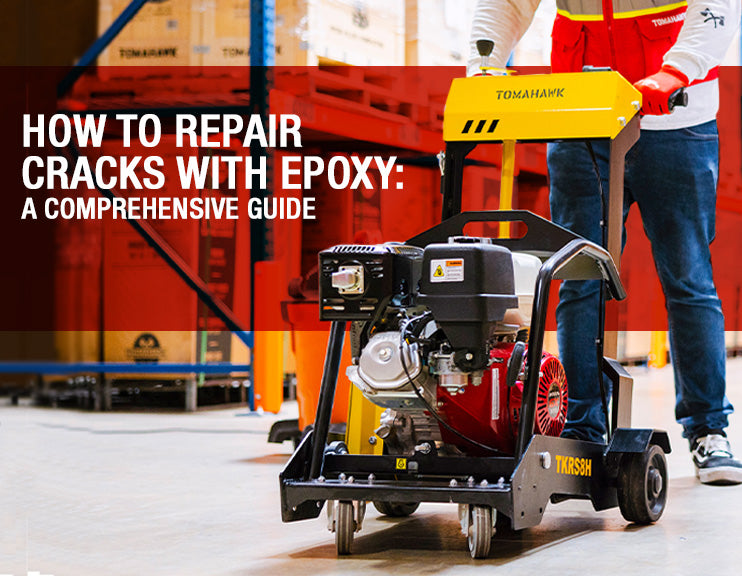Cracks in concrete not only mar the appearance of your structures but can lead to significant damage if neglected. Luckily, with the proper tools and techniques, these cracks can be effectively repaired, restoring your concrete to its former glory. Here's a step-by-step guide on how to repair concrete cracks.
Step 1: Identify and Prepare Cracks
Begin by identifying all the cracks. For better visibility and accuracy during the repair process, you might want to mark these with chalk. This initial step ensures that no crack is overlooked.

Step 2: Open Up the Cracks
Use a crack chaser saw with its precision-engineered V-shaped blade to diligently follow along the cracks. This tool is designed to efficiently open up the concrete, preparing it for a thorough repair.
Step 3: Clean the Cracks
Once opened, it's crucial to clean out the cracks completely. Remove all debris, dust, and contaminants by vacuuming and sweeping the area thoroughly. This cleanliness is critical to ensure the filling adheres properly, providing a durable repair.
Note: For the best results, use a pressure washer to completely clean out the crack. Make sure it is dry before adding any crack filler.

Step 4: Add Silica Sand
Prior to applying the epoxy, fill the crack with dry silica sand. This prevents the epoxy from seeping too deep into the crack, allowing it to effectively fill the voids and solidify. Sweep away any excess sand that remains on the surface.

Step 5: Apply the Epoxy
Mix your chosen epoxy crack filler as per the instructions on the product label. Pour the mixture into the crack, ensuring it is completely filled and that the filler thoroughly soaks into the sand. Don't hesitate to overfill; this ensures a comprehensive fill.

Step 6: Grind the Surface
After the filler has hardened, use a angle grinder or floor grinder to smooth out the excess epoxy, ensuring the repair is flush with the surrounding concrete surface.
Step 7: Sweep Up
Once the surface has been smoothed, sweep up the dust and debris with a push sweeper, broom, or vacuum to check your results.
Additional Cautions
- Avoid forced drying and be aware that coverage rates may vary.
- Mask areas needing protection and always wear appropriate protective gear.
- Consult Material Safety Data Sheets before starting and store materials at 50-70°F to maintain the product's pot-life.
- Crack fillers are typically designed for use in environments above 45°F.
By following these steps with right equipment, you can ensure a long-lasting repair that not only restores the functionality of your concrete but also its aesthetics.
Glossary
Epoxy: A type of adhesive used for bonding and repairing cracks in concrete. It's a resin that, when mixed with a hardener, forms a strong, durable bond.
Crack Chaser Saw: A tool designed to open up cracks in a precise V-shape to prepare them for repair. This helps in effectively filling the cracks with epoxy.
Silica Sand: Used to fill deeper cracks before applying epoxy. It prevents the epoxy from sinking too deep into the crack, ensuring a proper repair.
Angle Grinder: A handheld tool used to smooth hardened epoxy and ensure that repairs are flush with the surrounding surface.
Pressure Washer: Used for cleaning out cracks thoroughly before repair to ensure that the epoxy adheres properly.
Material Safety Data Sheets (MSDS): Documents that detail the safety and handling information for products like epoxy, important for ensuring safe use.
Pot-life: Refers to the amount of time epoxy remains usable after being mixed, before it starts hardening.
Protective Gear: Safety equipment that must be worn during the repair process, including gloves, goggles, and respirators, to protect against fumes and debris.













